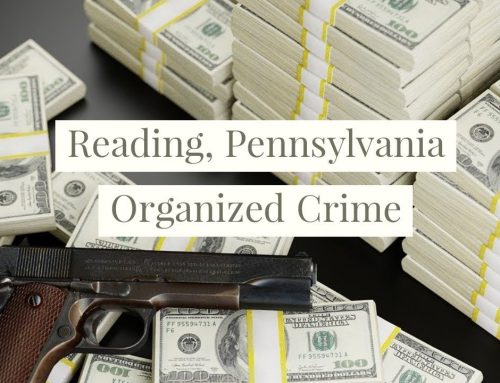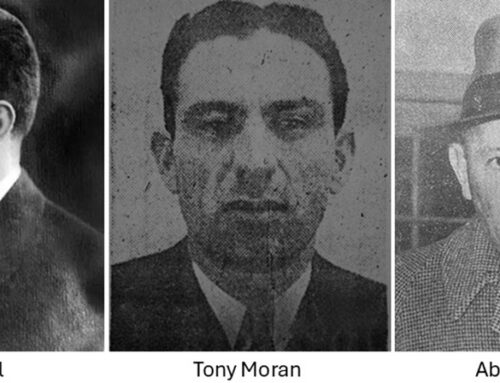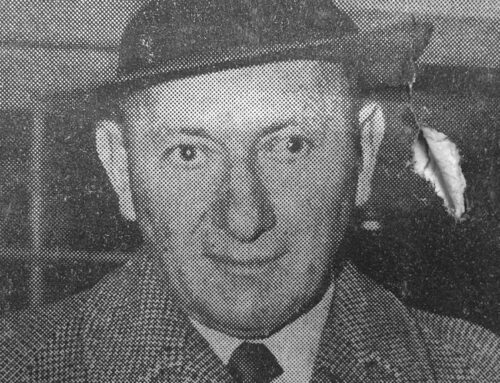In the fall of 1962, attention in Reading’s underworld drifted away from Abe Minker and the city’s familiar vice rackets to a quieter figure with powerful connections: Frank Donato. Though Reading was Minker’s turf, Donato had enough pull to run a numbers operation from his home while reporting up the chain to the Philadelphia Mafia under Angelo Bruno. A year earlier, Treasury agents had raided Donato’s residence at 29 South 2nd Street, seizing six boxes of gambling materials and charging him with taking wagers without the required federal occupational stamp. What never appeared in public paperwork, but quickly became mob lore, was a supposedly missing cache—$31,000 that Philadelphia believed Donato owed the “boss.”
The Abduction (September 15, 1962)
At about 10:15 p.m., while walking his dog near 2nd and Franklin, a black station wagon carrying five men rolled to the curb. Two jumped out, handcuffed Donato, and hustled him into the car. Thinking he was in federal custody, Donato didn’t cry out. The abductors pushed the dog out in West Lawn, then continued along Penn Avenue, turned onto Fritztown Road, and exited at Chapel Hill Road. There they stripped his T-shirt, tied his hands, and lashed him to a tree. The interrogation was blunt: “Where’s the money?” “You owe the boss $31,000.” Donato insisted he had “a few hundred in the bank.” After threatening him and jamming a gag in his mouth, the crew said they were headed to his house to make his sister hand over the cash; if she didn’t, they warned, they’d be back. They took $54 from his pocket and drove off.
Donato, sweating and straining on a warm night, worked himself free of the twine, removed the gag, and finally reached a nearby home where resident Philip Klahold let him phone authorities. State Troopers Warren Werner and Jack Bednar responded. Meanwhile, three of the abductors returned to South 2nd Street: the youngest waited in a parked car as two men walked to No. 29 and rang the bell. Inside, Donato’s sister Jenny opened the door to two armed strangers—John Miller and James Porter—who pushed into the living room, flashed Frank’s keys, and demanded “the thirty-one thousand.” They searched and came up empty, then returned the keys and stepped outside—just as city police arrived, capturing Porter and later finding Frank Townsend Jr. idling in a car down the street. Out on Penn Avenue, state troopers pulled over the station wagon Donato had identified, arresting Frank Townsend Sr. and George Sykes.
Authorities emphasized that these were not “made” men but lower-level collectors for Bruno. Their sloppy knotwork—“a Boy Scout could have tied a better knot”—had allowed Donato to escape. The five, each with a record, were charged with kidnapping. The $31,000 remained a phantom: either Bruno’s crew learned only recently that money had vanished in the 1961 raid, or Donato had been given a deadline to replace what agents might have seized. In the weeks after, Frank and Jenny testified before a federal grand jury in Philadelphia, recounting the abduction and home invasion. On November 13, they told the same story at a preliminary hearing before Alderman John DeMott, with identifications straightened out for the record.
The Hit (January 25, 1963)
Despite the danger, Donato kept to his routine. A longtime plumber’s helper, he spent two days repairing pipes at a relative’s house at 919 North 3rd Street. Near 5:45 p.m., stepping out to spread ashes beneath his car’s tires on an icy street, witnesses saw a late-model Cadillac—previously spotted cruising the block—ease by. A shooter in the left rear seat fired three rounds: two into Donato’s chest, one through his arm. Donato collapsed into the gutter near 919 North 3rd Street; the Cadillac fishtailed away. He died shortly after at St. Joseph Hospital. The next day, a .38 caliber revolver turned up in a gutter at 5th and Greenwich—six blocks from the scene—traced to a Delaware County doctor who had reported it stolen over two years earlier. Police believed out-of-state pros had been contracted for the job. Donato’s murder was Reading’s first mob-related killing since Johnny Wittig gunned down Tony Moran in 1945.
Alderman DeMott, the magistrate who had signed the kidnappers’ warrants, received a terse call immediately after the shooting: “You’re next.” Police protected him and Jenny, and though Philadelphia’s “Philly Five” claimed alibis for the hour of the murder, investigators were convinced hired guns carried out the hit. The state police were asked to assist; federal agencies, having just lost a key witness in their rackets probe, stayed quiet publicly. Houses of worship and civic leaders decried the corrosion of local law and order as fear rippled through Reading.

The life of Frank Donato ended in this icy gutter in the 900 block of North Third Street where he crumbled after assassins in a moving car shot him three times in the chest. The murder remains unsolved.
The Courtroom Wars (1963–1966)
The kidnapping case went to trial on March 14, 1963. Given the stakes, District Attorney Fred Brubaker requested sequestration; jurors were quartered at the Abraham Lincoln Hotel. Defense counsel sought to exclude Donato’s prior testimony; the court allowed it to be read. Jenny again identified Porter and Miller as the men who invaded her home. State troopers identified Sykes and Townsend Sr. from the station-wagon stop. The jury returned quick guilty verdicts against all five. They posted new bail and walked pending appeal.
What followed became a years-long tangle over evidence—specifically two pieces of twine. One length had bound Donato to the tree; another, of different diameter, was found in the station wagon. Defense attorney Sam Liever argued the discrepancy showed the Commonwealth had suppressed material facts. A heated exchange erupted: Judge Warren Hess remarked the issue “comes very close to being fraud on the court,” angering Brubaker, who said his integrity had been impugned. Petitions for new trials were ultimately rejected in November 1963, and in December Judge Wilson Austin sentenced four of the defendants to five-to-fifteen years, dismissing charges against Townsend Jr. for lack of specific identification. Townsend Sr. died in January 1964 while the case was still winding through appeals.
The State Superior Court later granted new trials. A 1965 retrial ended in a hung jury. The Commonwealth tried again in June 1966 before Judge Albert Readinger. Memories had blurred; notes from the preliminary hearing were frayed from repeated readings; the rope discrepancy again muddied the waters. After a week-long proceeding—punctuated by an unsuccessful defense motion for mistrial when Jenny was shown Donato’s torn T-shirt on the stand—the jury acquitted Sykes and Porter. Miller walked free on the kidnapping but returned to Philadelphia to finish an unrelated burglary sentence. For Reading, it was a gut-punch end to what once looked like an open-and-shut case.
Aftermath and Ironies
Frank Donato’s murder joined the long ledger of unsolved Mafia hits. A final, bitter irony lingered in family history: in 1930, Frank’s father, Frank Sr., rushed to the scene of an exploding illegal still at 2nd and Washington. Walking back to his home at 118 Franklin, he suffered a fatal heart attack at age 61—another life nicked by the city’s gray economy. As for the victim’s dog—the small creature abruptly dumped from the abductors’ car—Wyomissing Patrolman Douglass Filbert found and returned it to the Donato household, a tiny mercy in a story otherwise defined by menace and intimidation.
Aftermath and Ironies
Frank Donato’s murder joined the long ledger of unsolved Mafia hits. A final, bitter irony lingered in family history: in 1930, Frank’s father, Frank Sr., rushed to the scene of an exploding illegal still at 2nd and Washington. Walking back to his home at 118 Franklin, he suffered a fatal heart attack at age 61—another life nicked by the city’s gray economy. As for the victim’s dog—the small creature abruptly dumped from the abductors’ car—Wyomissing Patrolman Douglass Filbert found and returned it to the Donato household, a tiny mercy in a story otherwise defined by menace and intimidation.





This is very interesting to know about. I was born in the 50’s and heard many stories. Kubacki and the such.